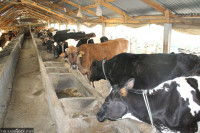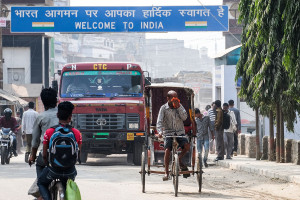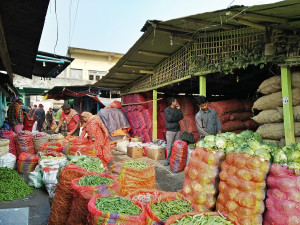Money
‘IC exchange facility beyond our ability’
Nepal Rastra Bank (NRB) has said that providing exchange facility to Nepalis holding demonetised Indian 500 and 1000 rupee banknotes is beyond its capacity.
Bibek Subedi
Nepal Rastra Bank (NRB) has said that providing exchange facility to Nepalis holding demonetised Indian 500 and 1000 rupee banknotes is beyond its capacity.
According to the country’s central bank, the Nepal government should act to make this happen. “We did all we could do from our level,” said Bhisma Raj Dhungana, head of the Foreign Exchange Management Department of NRB. “Now the government should raise this issue at the bilateral level to provide exchange facility to our citizens.”
It has been more than a month since NRB wrote to the Indian central bank, the Reserve Bank of India (RBI), seeking its permission to provide exchange facility to Nepalis possessing the scrapped banknotes, but there has been no reply.
The Indian government pulled 500 and 1000 rupee banknotes out of circulation last December, and thousands of Nepalis have not been able to exchange them for legal tender currency.
NRB sent an official letter on April 13 asking RBI for permission to commence the process of exchanging demonetised Indian banknotes worth up to IRs4,500 per individual as proposed by the Indian central bank.
During a meeting held in Nepal in March, RBI officials had proposed to allow Nepalis to exchange demonetised Indian banknotes worth up to IRs4,500 per individual. At that time, NRB officials had declined the offer and demanded that the ceiling be raised to IRs25,000 per person.
As both sides stuck to their stances, the meeting ended inconclusively. Later, NRB wrote to the Ministry of Finance for its advice. The Finance Ministry told NRB to provide exchange facility for up to IRs4,500 per individual as proposed by India, but continue pushing Indian authorities to raise the ceiling. NRB subsequently wrote to the RBI as per the Finance Ministry’s instruction.
“We don’t know the reason behind the delay in getting approval from Indian authorities,” said a highly placed NRB source. “However, we have reached the conclusion that our Foreign Ministry is not proactive enough to resolve the issue. The ministry should take up the issue seriously with the Indian government to obtain exchange facility immediately.”
The Nepali central bank had allowed Nepalis to carry Indian banknotes of 500- and 1,000 denominations based on the Indian government’s decision. The Reserve Bank of India, in February 2015, introduced the new Foreign Exchange Management (Export and Import of Currency) Regulations, allowing Nepali and Bhutanese citizens to “carry Reserve Bank of India currency notes of denomination IRs500 and/or IRs1,000 up to a limit of IRs25,000”.
NRB has said that IRs78.5 million in denominations of 500 and 1,000 exists within the financial system in Nepal. The figure includes cash deposited in banks, financial institutions and NRB.
Previously, NRB had estimated the amount to be around IRs33.6 million. But the actual stock of banned Indian banknotes is expected to be much higher because Nepalis were previously allowed to carry Indian 500 and 1,000 rupee notes worth up to IRs25,000.
Also, those residing in areas bordering India usually stash Indian notes of larger denominations as they travel to Indian markets to buy goods.




 8.12°C Kathmandu
8.12°C Kathmandu














